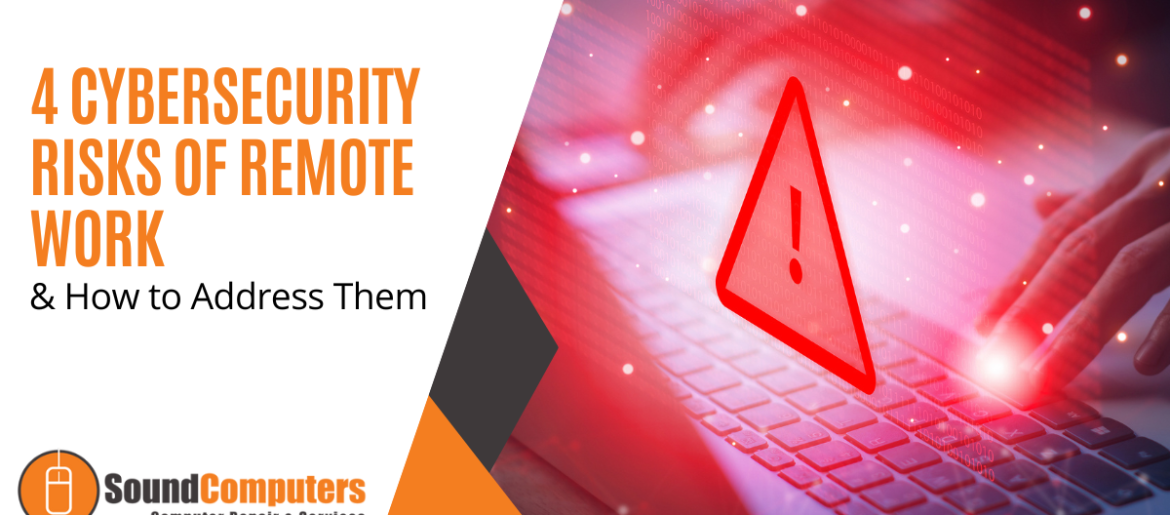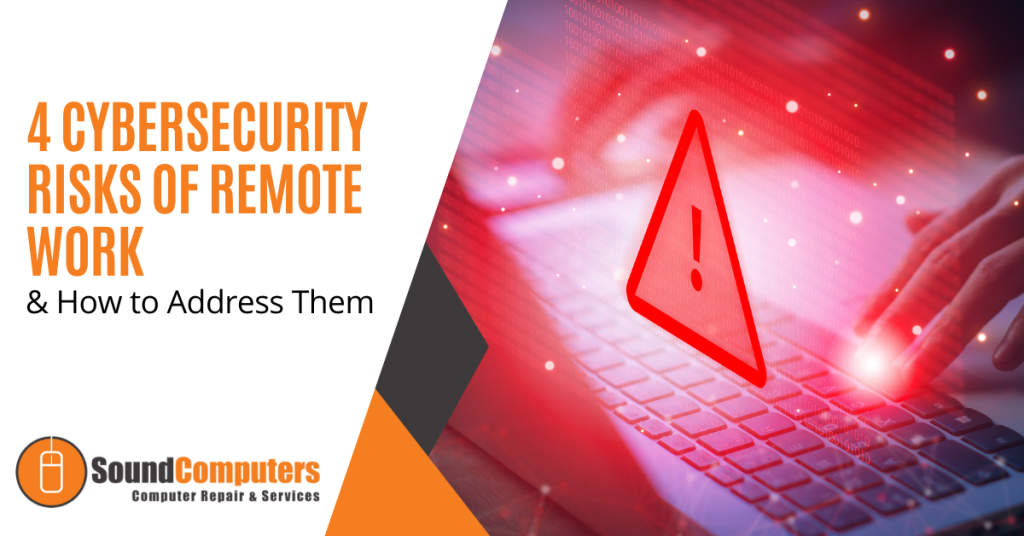

The COVID-19 pandemic has resulted in a significant shift towards remote work. As businesses continue to adapt to the new normal, remote work is becoming increasingly common. While remote work has several benefits such as increased flexibility, it also presents significant cybersecurity risks. Cybersecurity threats are on the rise and remote work has created new opportunities for cybercriminals to exploit vulnerabilities.
In this article, we will explore the cybersecurity risks associated with remote work and provide tips on how to address them.
The Rise of Remote Work
Thanks to COVID-19, remote work has become the new normal and it is likely to continue in the future.
Remote work has several benefits such as increased flexibility, reduced commute times and reduced overhead costs. However, it also presents significant cybersecurity risks.
4 Cybersecurity Risks of Remote Work
Remote work presents several cybersecurity risks that businesses need to be aware of. These risks include:
1.Phishing Attacks
Phishing attacks are a common cybersecurity threat that targets remote workers. Phishing attacks involve sending emails that appear to be from a reputable source (such as a bank or a colleague) but are actually designed to steal sensitive information.
Remote workers are more vulnerable to phishing attacks as they may not have access to the same security measures as they would in the office. For example, they may not have access to an email filtering system that can identify and block phishing emails.
2. Weak Passwords
Weak passwords are a significant cybersecurity risk for remote workers. Remote workers may use the same password for multiple accounts or they may use passwords that are easy to guess.
A weak password can be easily hacked which gives cybercriminals access to sensitive information such as financial data and customer data.
3. Unsecured Networks
Remote workers may connect to unsecured networks (such as public Wi-Fi networks) to access the internet. Unsecured networks are a significant cybersecurity risk as they can be easily hacked.
Cybercriminals can intercept data transmitted over unsecured networks which gives them access to sensitive information such as login credentials and financial data.
4. Lack of Physical Security
Remote workers may not have the same level of physical security as they would in the office. For example, they may not have a secure place to store their laptop or other devices.
This lack of physical security makes it easier for cybercriminals to steal devices and access sensitive information.
How to Address Cybersecurity Risks of Remote Work
Addressing the cybersecurity risks of remote work requires a multi-pronged approach. Here are some tips on how to address these risks:
Implement a Virtual Private Network (VPN)
A VPN creates a secure connection between a remote worker’s device and the internet. A VPN encrypts all data transmitted between the device and the internet which makes it more difficult for cybercriminals to intercept and steal sensitive information.
Use Strong Passwords
Remote workers should use strong passwords for all their accounts. A strong password should be at least 12 characters long and include a mix of uppercase and lowercase letters, numbers and symbols.
Remote workers should also use different passwords for each account to prevent a cybercriminal from accessing multiple accounts if one password is compromised.
Use Two-Factor Authentication (2FA)
Two-factor authentication (2FA) adds an extra layer of security to an account. With 2FA, a user needs to provide two pieces of information to log in like a password and a one-time code sent to their phone.
2FA makes it more difficult for cybercriminals to access an account even if they have the password.
Train Employees on Cybersecurity Best Practices
Employees should be trained on cybersecurity best practices to reduce the risk of cyber attacks. Training should cover topics such as how to identify phishing emails, how to create strong passwords and how to use 2FA.
Training should also cover how to secure devices (such as locking screens when not in use) and how to store devices securely when not in use.
Use Endpoint Protection Software
Endpoint protection software can help protect remote workers’ devices from cyber attacks. Endpoint protection software can identify and block malware, detect and respond to cyber threats and monitor network traffic for unusual activity.
Secure Home Networks
Remote workers should secure their home networks by changing the default username and password on their routers and by enabling network encryption. Network encryption can help protect sensitive information transmitted over the network.
Implement Data Protection Policies
Data protection policies should be implemented to ensure that sensitive information is handled appropriately. Policies should cover topics such as how data should be accessed, stored and transmitted.
Policies should also cover how data should be disposed of when no longer needed.
Conduct Regular Security Audits
Regular security audits should be conducted to identify vulnerabilities and address them before they can be exploited by cybercriminals. Security audits should cover all aspects of remote work including devices, networks and software.
Protect Your Organization Today
Remote work presents significant cybersecurity risks that businesses need to be aware of. Phishing attacks, weak passwords, unsecured networks and lack of physical security are just some of the risks associated with remote work.
To address these risks, businesses should implement a multi-pronged approach that includes the use of VPNs, strong passwords, 2FA, endpoint protection software and data protection policies. Employees should also be trained on cybersecurity best practices and home networks should be secured.
If you have any questions about cybersecurity risks of remote work or need assistance with securing your remote workforce, please contact Sound Computers. Our team of cybersecurity experts can help you implement best practices and ensure that your business is protected from cyber threats.
